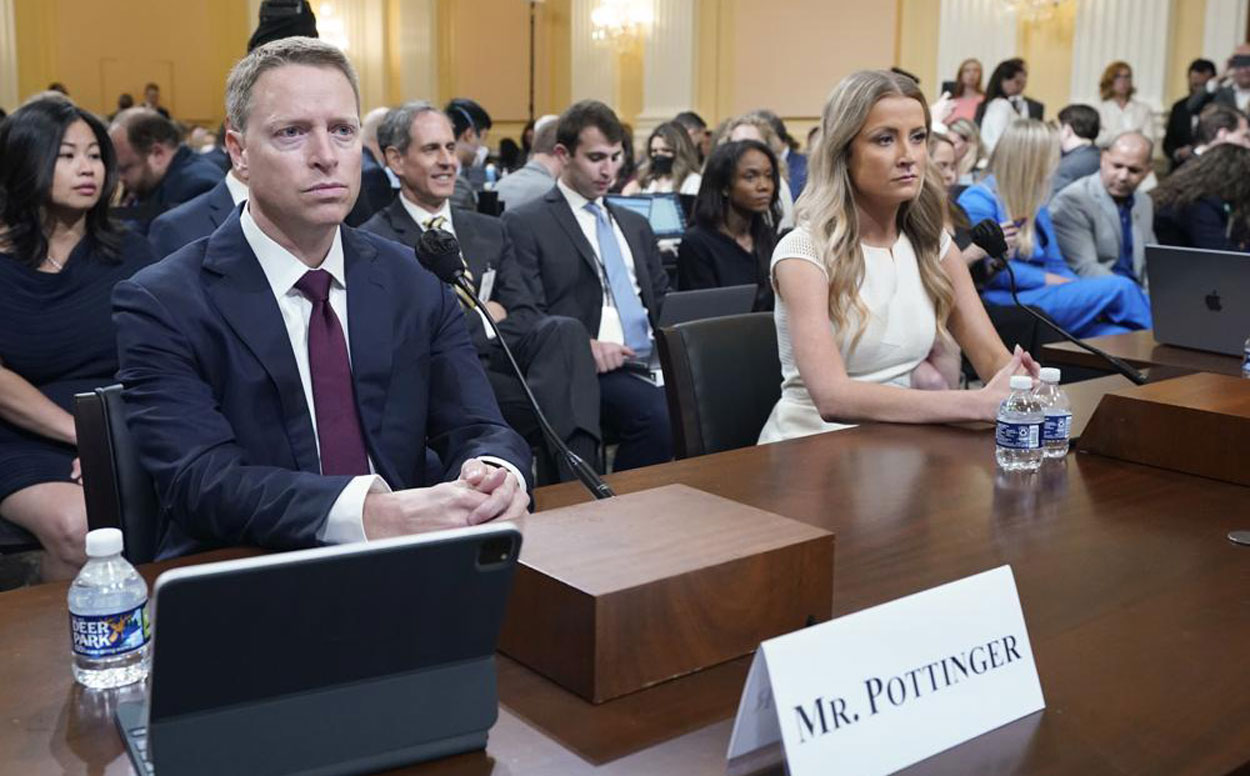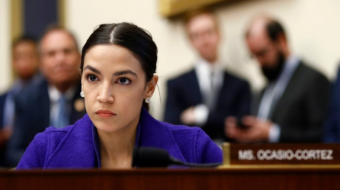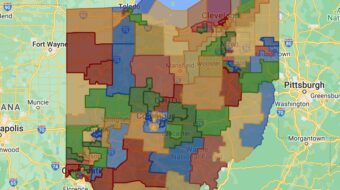
WASHINGTON – As an armed mob of his backers invaded the Capitol on Jan. 6, 2021 and an entire lineup of White House and government officials tried to get him to stop them, Trump sat in the Oval Office dining room enjoying the horror show as it unfolded on television.
Minute by minute, as people died and America’s hold on democracy itself became increasingly tenuous he sat there, didn’t call them off with a national speech, didn’t respond to pleas he stop their coup d’etat attempt and didn’t order help for overrun lawmakers and Capitol Police.
He didn’t walk to the White House press room just a few feet away to address them and tell them to “leave, now,” as lawmakers put it. And he didn’t act at all until after 187 minutes. Then he gave the invaders a half-hearted request to “go home, we love you.”
Instead, as the invasion progressed, Trump called rightist Republican senators, such as Texan Ted Cruz and Missouri’s Josh Hawley, urging them to keep contesting the legitimate Electoral College win by President-elect Joe Biden. He also called his attorney and election plan mouthpiece, Rudy Giuliani, to discuss next moves with members of his “war room.”
Meanwhile, more than 1,000 maddened, enraged, profane and heavily armed Trumpites invaded and pillaged the Capitol that day, sending lawmakers, staff and reporters literally running for their lives as the then-President Trump sat and did nothing.
And for all of that, Trump was derelict in his duty as president, violating o his oath of office to preserve, protect and defend the Constitution and the country, said witnesses last night to the lawmakers on the House Select Committee probing the invasion.
“We described how the president of the United States, who was bound by an oath, took no action when the core of our democracy was under attack,” said Rep. Elaine Luria, D-Va., a 20-year Air Force veteran who has taken a similar oath dozens of times.

“That is not inaction in a time of crisis. It was the final act of his own plan to usurp” the 2020 election’s outcome.
Went inside the White House
The committee’s riveting three-hour prime time hearing on July 21 went inside the White House, minute by minute, to show what Trump did and didn’t do to turn his fanatic followers’ “love of country into a weapon against our Capitol and against our Constitution,” added Rep. Liz Cheney, R-Wyo., who chaired the session, the eighth in a series.
“We must remember we cannot abandon the truth,” she added.
Whether voters will remember, and put preserving democracy at the top of their agendas when they vote this fall, is another matter. Opinion polls show continued high viewership for the committee’s hearings even those—unlike July 21—that aren’t in prime time.
Moving the needle is another matter. Overwhelming numbers of Democrats find the panel’s findings credible, and slightly less overwhelming numbers of Republicans don’t. Independents are moving towards the committee’s side.
Trump wasn’t totally inactive during the siege, testimony and videotaped under-oath interrogations showed. He tweeted twice, and sent out a link once. But that was it.
One tweet vilified his vice president, Mike Pence, for following the U.S. Constitution and refusing to reject Electoral College votes for Biden. The other was a half-hearted tweet telling the rampagers not to harm the Capitol Police. By that time, dozens of police were injured, five of whom ultimately died.
Before that, Trump “tweeted out a link of a recording of his Ellipse speech” prior to the invasion. At that speech, Trump ordered the armed insurrectionists to march to the Capitol, said Luria. He wanted to lead them, too, but the Secret Service drove him back to the White House, as Trump and his driver wrestled over the wheel in the presidential SUV.
Just 15 minutes into the invasion, never-before-seen footage showed that Trump knew the invaders had broken into the Capitol. And since they were armed, he knew their intent, too—and approved. Indeed, the point of this latest hearing was not just to show a time line, but that Trump knew of the invasion, and ordered it.
“Although President Trump was aware of the ongoing riot, he did not do anything,” former Trump press staffer Sarah Matthews testified. “He called Rudy Giuliani for eight minutes, just as the rioters were smashing into the building.” They talked strategy about how to keep Trump in office.
Lawmakers from both parties tried to reach Trump to get him to stop the invasion, knowing only he could order his legions to leave. So did top White House officials, said Matthews and the other live witness, former Deputy National Security Advisor Matthew Pottinger. So did Trump’s daughter, Ivanka.
Identical urging came from others, notably former White House counsel Pat Cipollone. He appeared in videoed sworn testimony.
Trump ignored them all.
Instead, a first Trump tweet “was essentially giving them a green light,” Matthews said of Trump’s message to the insurrectionists. “He shouldn’t have been doing that.
Poured gasoline on the fire
“It was literally him pouring gasoline on the fire.”
Tweets and calls to senatorial allies and his war room were Trump’s other actions during the invasion and insurrection.
“Are you aware of a call” from Trump “to the vice president?” about stopping it, a committee investigator quizzed Cipollone under oath. “No.” “Are you aware of a call to the Department of Justice?” “No.”
“Are you aware of a call to the Department of Homeland Security?” for that same objective. “No.” “Are you aware of a call to the Department of Defense?” “No.”
The standing-room-only crowd in Congress’s largest hearing room also heard radio traffic from Capitol Police and Secret Service agents inside the building, first officially declaring a riot, then later calling loved ones to say good-bye, fearing they could die.
Listeners learned of tweets and calls to Trump from prominent supporters nationwide, including rabid Fox News Trumpites Sean Hannity, Laura Ingraham and Brian Kilmeade, telling Trump to stop the invasion. One warned Trump’s Cabinet could try to invoke the Constitution’s 25th Amendment to suspend him from office for the last two weeks of his term.
Everybody in the White House and Cabinet, and many outside, wanted Trump to step in and stop the insurrection, and said so. Even Donald Trump Jr. told chief of staff Mark Meadows, “He’s got to condemn this shit ASAP.”
“Who didn’t want them (the invaders) to leave?” questioners asked Cipollone on that video. “I can’t think of anybody,” the former Counsel to the President replied.
“How about the president?” was the follow-up. “I can’t reveal private communications,” Cipollone said after a long and uncomfortable silence. “But obviously I think…” and his voice trailed off.
The session also featured more never-before-seen interior footage of the invasion—including how close, 13 yards, the insurrectionists came to grabbing Pence for being a traitor to Trump. They had already erected a scaffold, complete with noose, on the lawn. Their chant: “Hang Mike Pence!”

They saw how Trump, in tweets, and occasional responses to aides as he sat transfixed before the right-wing Fox News’s riot coverage on TV, agreed the crowd was right. “Mike Pence did not do what had be done,” Trump tweeted: Toss out electoral votes.
“You heard him, Pat,” Trump’s chief of staff, Mark Meadows, told Cipollone. “He thinks Pence needs to be hung.”
They saw how Hawley, safe behind a police line, “riled up” the insurrectionists with an incendiary speech and raised fist and then later fled the mob. The Missouri Republican Trumpite senator’s two-facedness brought the only laughter from the otherwise riveted hearing room crowd.
There were explosions
They saw police reports of an unknown source of smoke on the Capitol’s first floor, “explosions on the steps” at 2:24 pm that day, tear gas flooding the Rotunda—and reports of potential bombs laid outside two other buildings, forcing lawmakers and staffers to change shelter positions.
They saw video of Trump consigliere Steve Bannon, now standing trial for contempt of Congress for refusal to cooperate with the committee’s subpoena, predicting four days before the November election what Trump would do: Declare he won, no matter the results. If vote totals showed otherwise, Bannon said, there would be hell, but he used a stronger word.
“To show his dereliction of duty, watching Trump sitting in that dining room, talking to the senators and Giuliani and not to the Secretary of Defense and the Secretary of Homeland Security” to stop the invasion, “it felt to me like he was like Nero, fiddling while Rome was burning,” said Meadows’ top aide Cassidy Hutchinson, in a taped deposition.
The audience saw a video interview with retired D.C. Police Sgt. Mark Robinson, who had served in more than 100 presidential motorcades, telling of radio traffic “of individuals who were armed and up in trees” along streets towards the Capitol—scenes that played visually in one prior hearing.
And they heard two former Trump supporters, Matthews and Pottinger, a veteran, put country before party—and their boss—and advocate Trump had to go before the nation and stop the invasion. To not do so “would have damaged all the good we did,” Pottinger said.
Trump didn’t. Both quit, within hours, but not before an upset Matthews got into a verbal fight with one of her press staff colleagues. He talked of the politics of the situation, shifting blame away from Trump.
“Do you think it looks like we’re fucking winning?” Matthews angrily asked, with a gesture at the TV. “I don’t think it does.”
And they were reminded Trump still refuses to admit he lost, unlike two prior presidential candidates, Republican Richard Nixon in 1960 and Democrat Al Gore in 2000, defeated in extremely close elections that had legitimately questioned outcomes.
Trump finally made a half-hearted speech to the country the next day. It was on video and full of stops, starts and lines written for him that he arbitrarily axed, the entire tape shows. The ones he killed were the ones where admitted responsibility.
“I want to say Congress has certified the results,” Trump said in that January 7 video, never before seen. “I don’t want to say” that he conceded the election. He still hasn’t, said Cheney.

The proof was in the headlines on July 21. Within the last seven days, Trump had called Wisconsin’s Republican House Speaker Robin Vos, still trying to get him to void that key swing state’s 2020 electoral vote win for Biden. Vos refused. In retaliation, Trump is backing Vos’s foe in the party primary on August 9.
“Our democracy withstood the attack of January 6th,” said Committee Chairman Bennie Thompson, D-Miss., via video and absent from the live hearing because he is self-quarantined while recovering from a bout with the coronavirus.
“If there is no accountability for January 6th—for every part of this scheme—I fear that we will not overcome the ongoing threat to our democracy. There must be stiff consequences for those responsible.”
The hearings will resume in September, with investigation of further leads continuing through August. Information and new leads keep coming in, Cheney said. The panel expects to issue a report and recommendations before the close of this Congress, on how to prevent a repeat of this invasion.












Comments